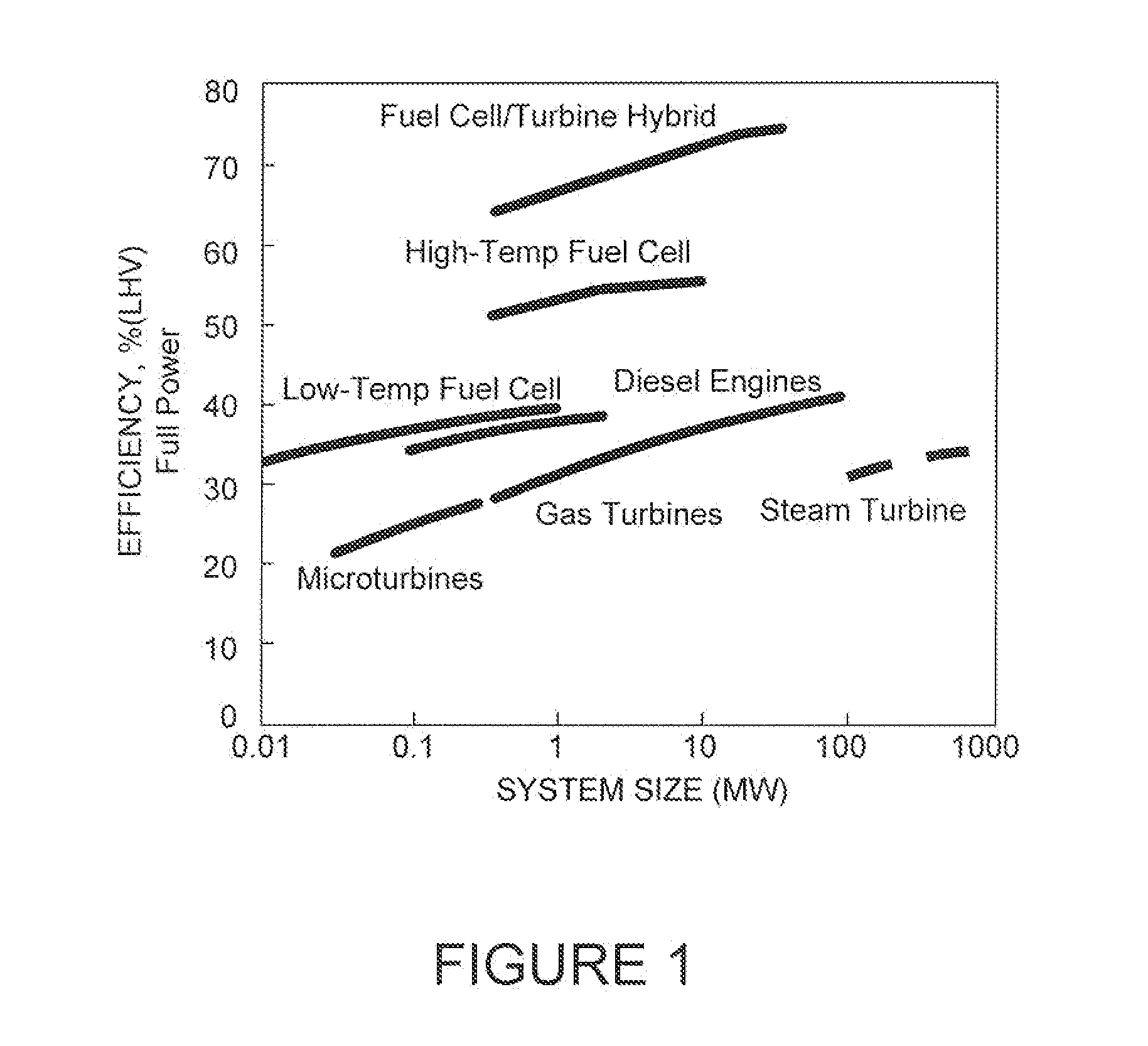Polyoxometalate flow-cell power system
a technology of polyoxometalate and flow cell, applied in the direction of indirect fuel cells, fuel cells, cell components, etc., can solve the problems of increasing the energy density of batteries by up to 25% through new electrode materials, and not delivering a substantial corresponding increase in runtime, so as to achieve the effect of not reducing the electrical conductivity
- Summary
- Abstract
- Description
- Claims
- Application Information
AI Technical Summary
Benefits of technology
Problems solved by technology
Method used
Image
Examples
example 1
Catalyst Nanoparticle Preparation for the Pom Flow Cell and Pom Reactor
[0038]Since the electrochemical reaction occurs only at the catalyst surface, it is important to increase the available surface area per volume of catalyst used. Thus, to achieve high catalyst utilization, nanoparticles are synthesized on a carbon support. The carbon support prevents the nanoparticles from aggregating and provides a high electronic conductivity with good physical stability. The carbon-supported Pt and Pd nanoparticles and different compositions of noble-metal alloys (PtxPdy and PtxRuy) can be synthesized using a co-precipitation method. FIG. 10 shows a flow diagram of the catalyst-preparation steps, based on the co-precipitation method, according to one embodiment of the present invention.
example 2
Catalyst Ink Preparation for the Pom Flow Cell and Pom Reactor
[0039]First, an effective POM oxidizing electrode surface is prepared. To reduce the overpotential and to effectively oxidize POM, the anode electrode possesses both the electronic and ionic conducting networks. To fabricate a direct POM flow cell with such electrode properties, the anode catalyst ink is prepared by mixing the selected catalytic particles from Example 1 with Nafion® solution and water. This ink is applied onto the polymer membrane and dried to form the electrode surface. In this electrode surface, Nafion® provides an ion-conducting network, while the catalyst particles provide the electronic conducting network for a direct POM flow cell. However, if too much Nafion® solution is added to the catalyst particles during the ink-preparation step, the catalyst particles cannot maintain a good electronic conducting network, because each particle is separated by an excess amount of Nafion® polymer. On the other h...
example 3
Membrane Electrode Assembly Preparation for the Pom Flow Cell
[0041]Both the anode and cathode electrodes are fabricated by air brushing the inks from Example 2 onto a Nafion® polymer membrane. Nafion® membranes with thicknesses of 2, 5, and 7 milli-inches can be used to fabricate membrane electrode assemblies (MEAs). To secure the membrane while spraying the inks, the membrane is placed on a heated vacuum table 1102, as shown in FIG. 11. This elevated temperature will improve the drying rate of the excess water. After applying and drying the cathode ink first on one side of the membrane, the membrane is turned over for application and drying of the anode ink. Since POMs consist of large anion clusters with balanced cations, i.e., protons, there is a large electrical repulsion between this anion and the sulfonic acid groups within the Nation® membrane. Hence, a large diffusive flux of POM from the anode to the cathode of the flow cell through the Nafion® membrane is not seen. A very ...
PUM
| Property | Measurement | Unit |
|---|---|---|
| power densities | aaaaa | aaaaa |
| reduction potential | aaaaa | aaaaa |
| volume | aaaaa | aaaaa |
Abstract
Description
Claims
Application Information
 Login to View More
Login to View More - R&D
- Intellectual Property
- Life Sciences
- Materials
- Tech Scout
- Unparalleled Data Quality
- Higher Quality Content
- 60% Fewer Hallucinations
Browse by: Latest US Patents, China's latest patents, Technical Efficacy Thesaurus, Application Domain, Technology Topic, Popular Technical Reports.
© 2025 PatSnap. All rights reserved.Legal|Privacy policy|Modern Slavery Act Transparency Statement|Sitemap|About US| Contact US: help@patsnap.com



